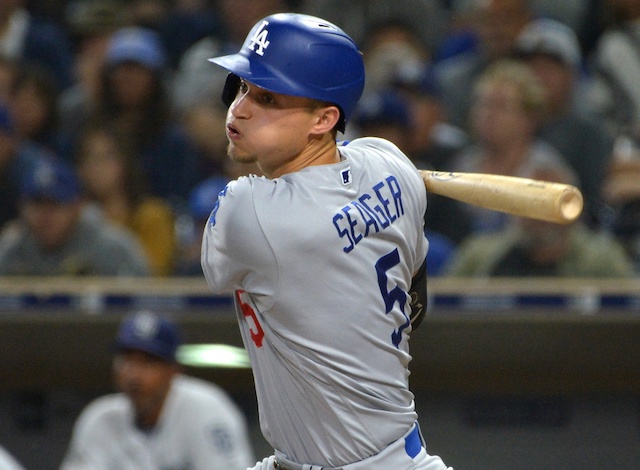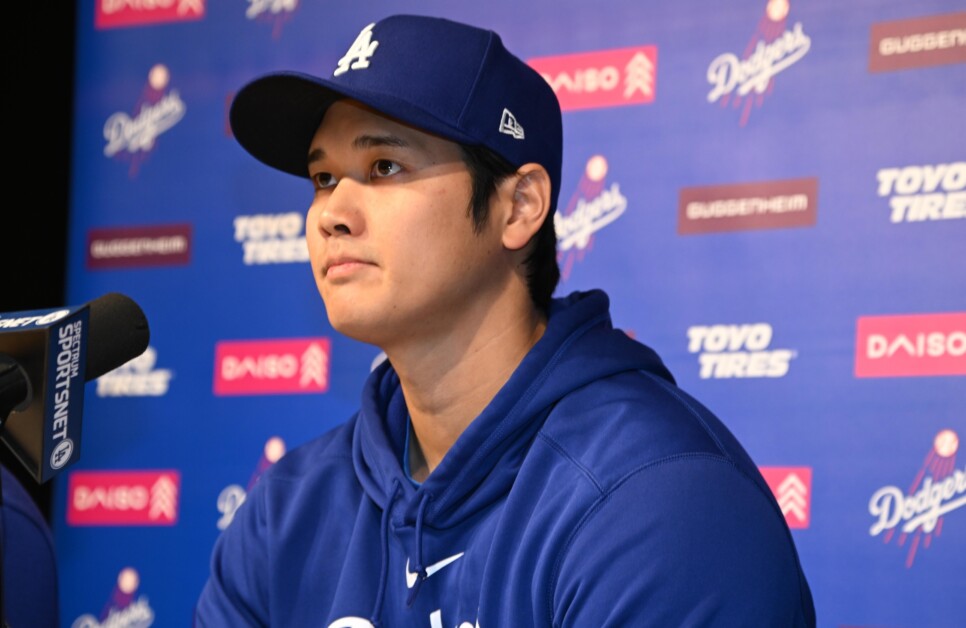What in the world should the Los Angeles Dodgers do with Corey Seager?
To some, he is a 25-year-old middle infielder who has two All-Star Game appearances, a top-three MVP season, two Silver Slugger Awards and a Rookie of the Year under his belt already. In the three full seasons he has played, he’s averaging 5.4 WAR (which would be 0.5 more WAR than Josh Donaldson put up last season).
To others? He’s a free-swinging, undisciplined hitter who probably won’t stick at shortstop long term. He’s injury prone (160 games played the last two seasons) and has struggled mightily in the postseason (three home runs and an average around .225 in 131 plate appearances) — not to mention he has just two years of control left, both of which won’t be cheap.
To some, Seager is a franchise cornerstone that you develop for the express purpose of locking up long-term. To others, he’s a valuable trade chip that needs to be cashed in ASAP if the Dodgers want to win a World Series.
Honestly, it’s difficult to recall a recent player more polarizing than Seager. Had the Dodgers simply won a single World Series, he’s beloved and defended. But because they haven’t and anxiety is at an all-time high (thanks Gerrit Cole), Seager has become the de-facto “problem.”
But enough about Seager the idea, what about Seager the player in 2019?
Despite missing a month due to a hamstring strain, Seager put up pretty remarkable numbers this past season. He finished with a slash line of .272/.335/.483 and 19 home runs to go along with a National League-leading 44 doubles.
Again, all while playing a premium defensive position that isn’t typically associated with boasting a plus-bat.
Unfortunately, the playoffs were more of the same struggles for Seager — as he finished 3-for-20 with one walk and one extra-base hit (a double). He scored zero runs and didn’t have a single RBI.
One other thing of note for Seager are his splits. Remember that entering the year he was coming off a season in which he missed almost the entire season due to Tommy John surgery (and a hip operation) — so if we account for a bit of acclimation time, both to begin the season and after the hamstring strain, there are reasons for optimism here.
If you take out the first month of the season, in the 33 games before getting injured, Seager was hitting .315/.382 /.559 with 6 homers, 22 runs and 29 RBI. Simply put, it was absolutely brutal timing for an injury.
After returning from the hamstring injury, Seager closed the regular season with a month of .291/.322/.616, seven home runs, 16 runs and 26 RBI.
What’s the point? When healthy, Seager remains an elite baseball player — and with a full offseason to work on his game and get into a rhythm, it wouldn’t be a surprise to see a return to his form seen in 2016 and 2017.
2019 highlight
June 8 the Dodgers played the San Francisco Giants. The game centered around a matchup the Giants clearly wanted: their pitchers versus Seager. Three times Cody Bellinger was intentionally walked to get to Seager, and three times he punished the Giants.
Seager finished 4-fo-r5 with four RBI — including a two-run double that broke the game open in the seventh inning. The Dodgers went on for a 7-2 win.
2020 outlook
As hinted at above, the future for Seager is a mixed bag. From a production standpoint, it’s worth buying as much Corey Seager stock as possible. The question is simply whether or not that production is going to be in a Dodger uniform.
At this point it’s difficult to believe the Dodgers would be able to both ship Seager out and bring in his replacement simultaneously — but who knows. For now, look for a Seager-revival next season.
Have you subscribed to our YouTube channel? It’s the best way to watch player interviews, exclusive coverage from events, participate in our live shows, and more!








